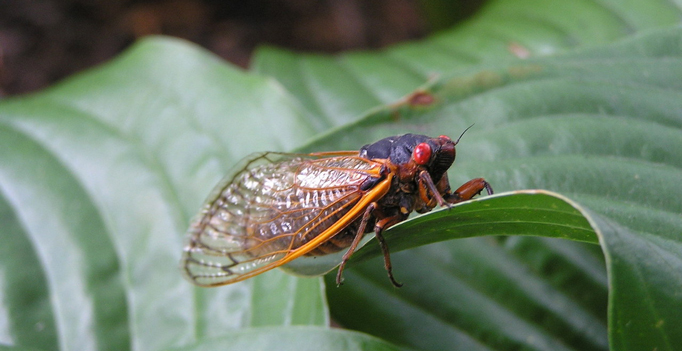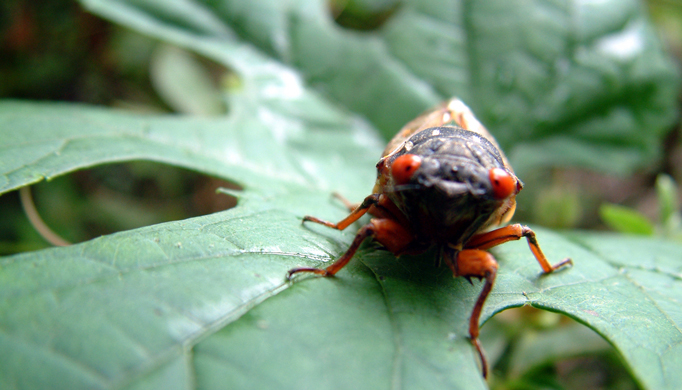17-Year Periodical Cicadas Coming Soon
Curator of Invertebrate Zoology and Entomologist Dr. Gavin Svenson recently appeared on Cleveland’s Fox 8 News to discuss the upcoming periodical cicada emergence. Here's all the information Northeast Ohioans should know about this amazing natural phenomenon.
Periodical cicadas are unique to eastern North America and emerge every 13 or 17 years, depending on the species. Cicada nymphs burrow underground and feed on tree sap until a specific period of time passes. Adult cicadas emerge from the ground and live for up to six weeks with one objective—to mate and lay eggs. "Broods" are groups of cicadas that emerge at the same time, but can include multiple species. Brood V will be emerging in Ohio and parts of its neighboring states later this spring.
Each brood has a restricted geographic range, which means on any given year, somewhere in the eastern United States, a brood of periodical cicada could be emerging. 15 unique broods have been identified to date, and their emergence timing and location are fairly well known. Not all cicada species are "periodical." Northeast Ohio's annual cicada species can be heard singing in the trees every year, but their numbers are far less than periodical cicada broods.

Why periodical cicadas evolved such a long development cycle is not known, but the answer could be linked to predator avoidance. Brood V spends 17 years underground. After 17 years elapse, they dig to within 6 to 8 inches of the surface and wait to emerge until ground temperatures reach between 64 and 66 degrees. The cicadas crawl up on plants to shed their nymphal exoskeleton and dry out their wings.
People can expect to see hundreds, thousands, or even millions of periodical cicadas this spring, depending on timing and locations. Brood V cicadas will be quite numerous in good forest habitat, and less abundant in urban areas. Males call to mates using a loud screech, which is created with a structure called a tymbal. They flex tiny muscles to "click" a stiff membrane back and forth very, very quickly. This fast clicking creates the loud sound we hear from the treetops.
If you live in Northeast Ohio, you will almost certainly encounter periodical cicadas this year. If you find one in your house, car, or one has landed on your person, you can handle them gently and set them outside. They do not bite, but they will try to flutter their wings when handled, which can be startling. Nymphs emerging from the ground and shedding their exoskeleton are very delicate for a few hours before they can fly. Avoid touching them at this early stage.

There is so much that is not known about these insects including how they count the years, why 17 or 13 year cycles, and how the broods originated. They represent a fascinating species with much to be discovered, and they live right here in our backyard! Insect emergences like periodical cicadas don't happen very often and they are special to our area. The rarity of the event and the sheer numbers that will emerge in synchrony after so many years is a spectacle to behold rather than fear.
Go back to all announcements